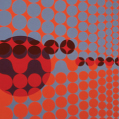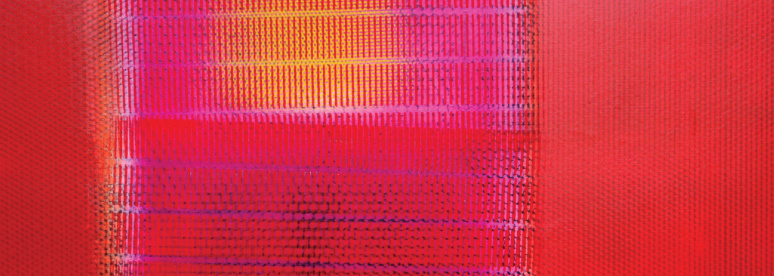PAST EXHIBITION

Geometry and Gesture from the Collection
March - July 15, 2006
THE EXHIBITION
Geometry and Gesture from the Collection is part of a continuing series of exhibits over the past year that have explored different facets of the OAS permanent collection. The current exhibit looks at the collection through the prism of geometry and gesture. Included in the exhibit are a number of works that date from the 1940s as well as several very contemporary pieces, however, the majority of works on view were produced in the 1950s and 1960s, and most were acquired at the time of the artists’ solo shows at OAS.
On the first floor, the exhibit features works that are largely based in the formal rigor and sensibility that characterize geometric expression; in counterpoint, on the second floor, are those that rely on a gestural dynamic of immediacy and informalism.
In Uruguay, Argentina, Brazil, and Venezuela, the various formal and conceptual movements that developed along geometric lines were particularly strong and influential. They continued paths of research opened up by the work of Mondrian and De Stijl artists, while integrating the particular sensibilities of the Latin American experience. The term “geometría sensible” (sensitive geometry) has often been used to characterize different manifestations of geometric abstraction in Latin America.
Represented in the collection are some of the artists who have played key roles in this line of expression. The Uruguayan Torres-Garcia founded the Taller Torres-Garcia in 1943 and published his theoretical work Constructive Universalism the following year. In Argentina, Kosice founded the Madi group in 1946, which like other Argentine geometric groups in the forties, such as Arte Concreto Invención and Perceptismo, was rooted in a “scientific aesthetic” The artists of the Arte Generativo group founded in the late 1950s continued this tradition in Argentina with its search for the perfection of geometry through line and color. Venezuelan artists Otero, Soto and Cruz-Diez were leading innovators of a kinetic art in which movement--actual or virtual—was an integral component. Not represented in the museum collection are artists of the important Brazilian Concrete and Neo-concrete groups and this absence in the collection points to a direction for future building. From other countries in the region, the exhibit includes work by artists associated with individual forms of geometric expression like the Colombians Ramirez-Villamizar, Negret, and Sanin, as well as a several works by artists who, while not considered geometric abstractionists, use geometrical elements in interesting ways.
The second part of the exhibit groups together a selection of works that, though diverse in their technical practices, emphasize the gestural dynamic. Brushwork, signs, modeling, and color are used as a means to transfer pure emotion and internal creative energies onto canvas and convey the direct immediacy of the moment of creation. The Surrealists opened up new possibilities in this line with their interest in such technical devices as “automatism” and in psychoanalytic theories about the role of the unconscious and universal inner sources.
Chilean Roberto Matta, who was a member of Andre Breton’s Surrealist group in Paris, became, upon his move to New York in 1939, a key figure in transmitting Surrealist theories to the coming generation of abstract expressionist painters. Artists like Merida of Guatemala and Szyszlo of Peru were highly identified with linking pre-Hispanic sign-like elements to a gestural abstract language. Argentine artists Jorge de la Vega and Ernesto Deira between 1961 and 1965 worked and exhibited with the group of artists known as the Otra Figuración (Another Figuration) which used an aggressive and violent gesture to depict highly abstracted distortions of the human figure. Japanese Brazilian artists of the SEIBI group took an alternative path to Brazilian concrete art and were leading exponents of a type of lyric informalist abstraction from the late fifties on. There are several very contemporary pieces on view that show that artists continue to find a powerful resonance in the formal and painterly elements of a gestural abstraction.
Through these various installations of the permanent collection, the museum’s aim has been to give a sense of the breadth and depth of the collection as well as the rich variety of creative expression that characterizes the region.

